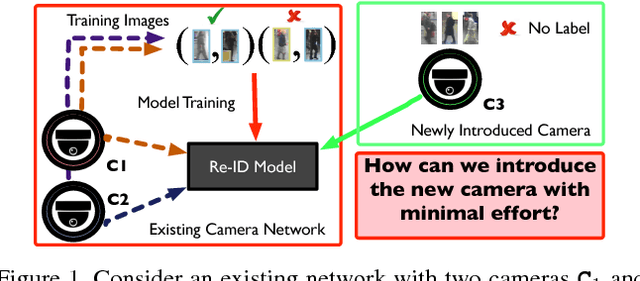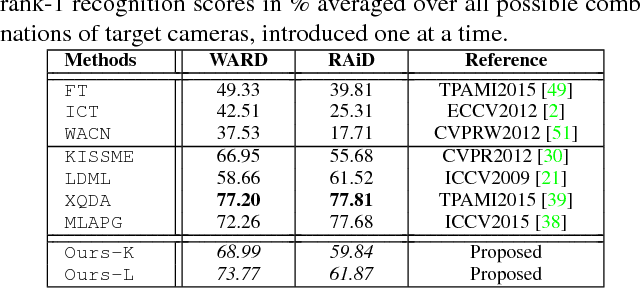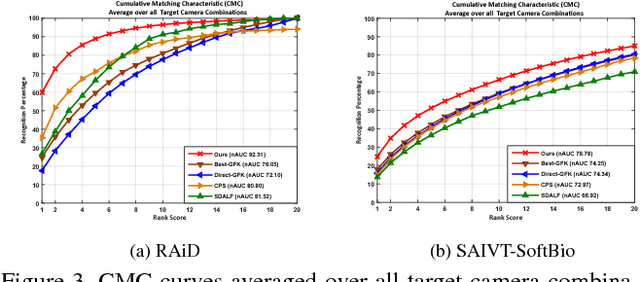Unsupervised Adaptive Re-identification in Open World Dynamic Camera Networks
Paper and Code
Jun 09, 2017



Person re-identification is an open and challenging problem in computer vision. Existing approaches have concentrated on either designing the best feature representation or learning optimal matching metrics in a static setting where the number of cameras are fixed in a network. Most approaches have neglected the dynamic and open world nature of the re-identification problem, where a new camera may be temporarily inserted into an existing system to get additional information. To address such a novel and very practical problem, we propose an unsupervised adaptation scheme for re-identification models in a dynamic camera network. First, we formulate a domain perceptive re-identification method based on geodesic flow kernel that can effectively find the best source camera (already installed) to adapt with a newly introduced target camera, without requiring a very expensive training phase. Second, we introduce a transitive inference algorithm for re-identification that can exploit the information from best source camera to improve the accuracy across other camera pairs in a network of multiple cameras. Extensive experiments on four benchmark datasets demonstrate that the proposed approach significantly outperforms the state-of-the-art unsupervised learning based alternatives whilst being extremely efficient to compute.
 Add to Chrome
Add to Chrome Add to Firefox
Add to Firefox Add to Edge
Add to Edge